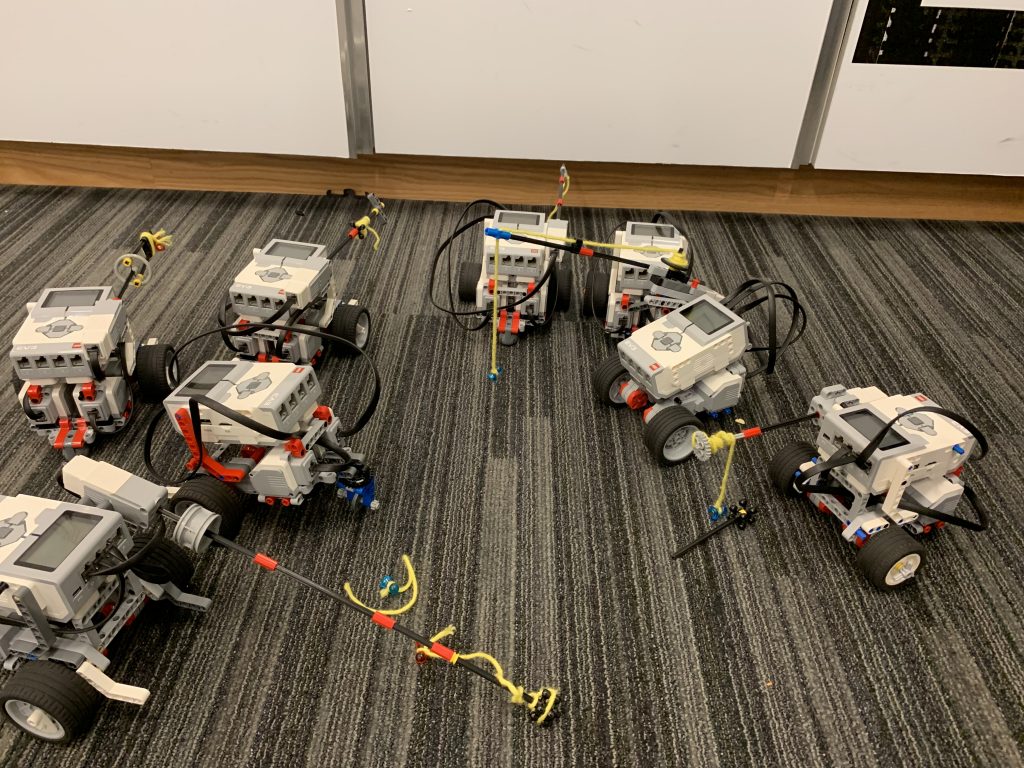These two weeks Lawton and Toya spent volunteering at the Anchorage Museum at the Robot It! summer camp. Each year the Anchorage Museum has a few weeks during summer which they have summer activities for elementary aged students. One of these summer camps is “Robot It!”, a camp in which kids are given daily challenges which they must collaborate with others too build robots to overcome a problem. These are themed around Alaskan challenges, not only teaching them about robotics, but issues especially important to Alaska. This year these included fishing, navigation, and foraging.
For the first week, Toya had the morning shifts while Lawton had the afternoon shifts, and swapped for the second week. The first week was the older kids, ages 10 – 12, and the second week was kids aged 7-10. Both weeks followed a similar routine. On the first day kids got introduced to the camp, set ground rules, and build a Lego robot with two wheels that could drive.
The second day’s challenge was scavenging for food. We visited the food exhibit at the museum, which was about the history, present issues, and future of how food is produced and consumed in Alaska. A large piece of green paper (representing tundra) was populated with blue dots of various sizes (representing berries). The objective was to create a robot which would detect the berries. On the bot they created the day before, they added a color sensor. We walked them through programming a simple robot which would drive until it sees blue, and beep. Those who finished were given a more difficult task to detect when the robot drove off the tundra, and turn back on.
On the third day, the food theme continued. A paper “pond” was laid out with paper fish, and magnets attached to them. Using the same robot as the previous challenge, they added a motor and a “fishing rod”. A string was wound around the rod, and when the motor would unwind, the string would deploy. A magnet attached to the string would attract fish, and raise it up. The kids had a lot of creativity with their designs.
The fourth day was hunting. An arm was attached to the robot, and a small tennis ball placed in the arm. Paper moose, caribou, and other game was placed behind a line, and kids needed to launch a ball that would hit them. They quickly picked up that a longer arm shot the balls faster, and adapted that into their strategy.
Finally, on the fifth day, kids were challenged to make a robot to avoid trees and navigate through a forest. This had by far the most difficult programming. An ultrasonic sensor was used to detect the distance of trees from the robot, and if they got too close, change trajectory to avoid it. Not only was this a difficult challenge to complete, but as it turns out kids had a ton of fun chasing the robots and trying to make the robots crash into themselves.
This was my second year volunteering for the camp, and the fourth year I have been involved in it. I did the very camp myself back when I was these kids age, and remember loving it just as much as I do teaching it. The excitement on kids faces when their code works for the first time, or when they test their mechanism and it finally works as it should is heartwarming. I remembered feeling the same excitement when I was in the camp and was the first team to get their light sensor to work, or beat another team at sumo bots. People assume when they look at a robot it works the first try, and as much as we hate failure, it one of the greatest things in engineering. The struggle you face doesn’t defeat you, but it pushes you to try something new, learn new lessons, or rethink it completely. It teaches you not just knowledge for the future, but a future for your knowledge.



